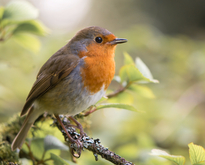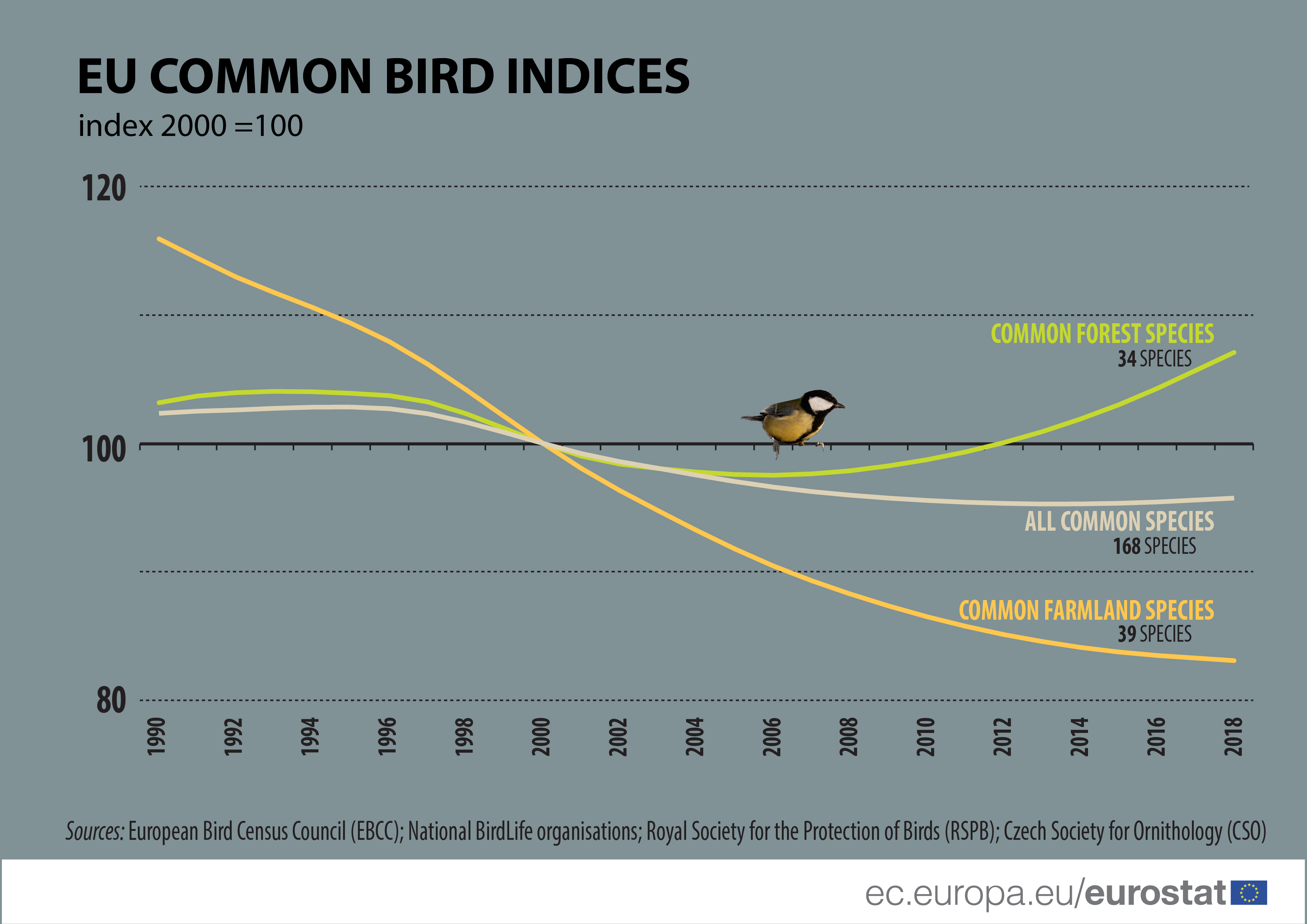Birds are considered to be good indicators of the diversity and integrity of ecosystems as their populations reflect changes in the populations of species they feed on, such as insects. Birds are highly mobile – they can move elsewhere when their environment becomes unsuitable. This is why the presence, abundance and diversity of bird species tell a story about the condition of the environment and its development over time. Very importantly, birds are easy to observe (compared to most other groups of animals) and attractive to the public to monitor, hence a lot of data from bird observation are available.
In general, the populations of birds have been declining for several decades in the EU. While the decline appears to be slowing down in the most recent years, still, between 2000 and 2018, the EU's population of all common bird species declined by more than 4% and common farmland birds by almost 17%. In contrast, an increase of over 7% was observed for common forest birds.
Source dataset: env_bio3 (sources: European Bird Census Council (EBCC); national BirdLife organisations; Royal Society for the Protection of Birds (RSPB); Czech Society for Ornithology (CSO))
The scientific community believes that major losses in populations of common farmland bird species can be attributed to changes in land use and agricultural practices, such as the disappearance of small non-productive landscape elements – hedges and windbreaks, and the use of pesticides. The effects of these drivers could be reversed by the recently adopted Farm to Fork Strategy, seeking to reduce by 50% the overall use of and risk from chemical pesticides by 2030, and the EU Biodiversity Strategy for 2030 aiming to bring back at least 10% of agricultural area under high-diversity landscape features and enlarge the area under organic farming so that it accounts for 25% of the total farmed land of the EU by 2030.
The news item is published on the occasion of the World Environment Day (5 June).
Methodological note on common bird indices:
- Bird monitoring in the EU is conducted under the umbrella of the PanEuropean Common Bird Monitoring Scheme. The scheme helps standardize data collection and data analysis practices across countries and produces three indices of the populations of common birds – index for all common birds (including 168 species), index for common farmland birds (39 species) and index for common forest birds (34 species).
For more information:
- Eurostat website sections on environmental and biodiversity statistics
- Eurostat Statistics Explained article on biodiversity statistics
- Eurostat news item on protected terrestrial and marine areas
- Directorate-General for Environment of the European Commission
- The new EU Biodiversity Strategy for 2030
- The PanEuropean Common Bird Monitoring Scheme
Note: The European Union (EU) includes 27 EU Member States. The United Kingdom left the European Union on 31 January 2020. Further information is published here.
To contact us, please visit our User Support page.
For press queries, please contact our Media Support.


